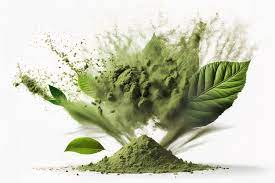Kratom, a tropical tree native to Southeast Asia, has garnered attention in recent years for its potential psychedelic properties when consumed in capsule form. While traditionally used for its stimulant and pain-relieving effects, enthusiasts and researchers alike are delving into its potential to induce altered states of consciousness. The use of kratom capsules offers a convenient and precise method of consumption, allowing users to explore its psychedelic potential with ease. At the heart of kratom’s psychedelic allure lie its active compounds, particularly mitragynine and 7-hydroxymitragynine, which interact with opioid receptors in the brain. This interaction can result in a range of effects, from mild euphoria and increased sociability to profound alterations in perception and consciousness. When encapsulated, kratom offers a measured dose, minimizing variability and allowing for a more controlled experience compared to traditional methods such as chewing the raw leaves or brewing them into a tea. For those seeking to explore altered states of consciousness, kratom capsules present a gateway to a unique journey. Users report experiences ranging from heightened sensory perception and introspective insights to vivid hallucinations and dissociative states.
The intensity and nature of these effects can vary widely depending on factors such as dosage, individual physiology, and environmental setting. Some users describe a sense of connectedness with nature and profound spiritual experiences, while others encounter challenges such as nausea, dizziness, or feelings of disorientation. The psychedelic potential of kratom capsules has sparked interest among researchers studying consciousness and psychoactive substances. Studies have explored kratom’s effects on mood, cognition, and perception, shedding light on its potential therapeutic applications and its risks. While anecdotal reports abound, rigorous scientific investigation is necessary to fully understand kratom’s mechanisms of action and its implications for mental health and well-being. However, the exploration of kratom’s psychedelic potential is not without controversy. Concerns have been raised about its addictive potential and the risk of adverse effects, particularly with long-term or excessive use. Some users may develop tolerance, dependence, or withdrawal symptoms, highlighting the importance of responsible consumption and harm reduction practices.

Regulatory authorities have also raised alarms about the safety and legality of kratom, leading to bans or restrictions in some regions. Despite these challenges, interest in kratom’s psychedelic properties continues to grow, fueled by curiosity, anecdotal reports, and emerging scientific research. Enthusiasts tout its potential as a tool for self-exploration, creativity, and healing, while critics warn of potential pitfalls and unknown risks. As with any psychoactive substance, informed consent, moderation, and awareness of one’s own limits are crucial when embarking on journeys into altered states of consciousness with kratom capsules. In conclusion, kratom capsules offer a convenient and accessible means of exploring the psychedelic potential of this intriguing plant. Whether seeking spiritual insights, creative inspiration, or simply a novel experience, users are drawn to kratom’s promise of altered states of consciousness. Yet, as with any psychedelic journey, caution and respect are paramount to navigate the complexities of the mind and ensure a safe and meaningful exploration of kratom’s psychedelic terrain.




